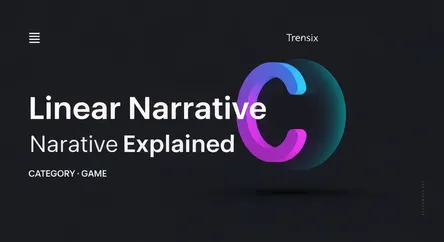Game
Linear Narrative Explained

Discover what a linear narrative is and why this straightforward storytelling method remains a powerful tool in modern video game design.
What is it?
A linear narrative is a storytelling method where the plot unfolds in a sequential, chronological order from a distinct beginning to a middle and an end. In video games, this translates to a structured experience where the player progresses through a predetermined path of events, missions, and story beats. Unlike branching narratives, player choice has little to no impact on the main story's outcome. Games like the Uncharted series or The Last of Us are prime examples, guiding the player through a set, cinematic adventure.
Why is it trending?
Despite the rise of open-world and choice-driven games, linear narratives remain popular because they allow developers to craft a tightly controlled, high-impact experience. This structure enables precise pacing, focused character development, and powerful emotional moments, much like a film. It guarantees every player experiences the story as intended, ensuring key plot points and emotional crescendos land with maximum effect. This curated approach is perfect for delivering a polished, memorable, and author-driven story.
How does it affect people?
A linear narrative offers players a clear and accessible journey. It removes the pressure of choice, allowing them to immerse themselves fully in the story and characters presented. This can lead to a more potent and emotionally resonant experience, as the developer has crafted a specific emotional arc. However, this approach limits player agency and replayability, as the story will be the same on subsequent playthroughs. It trades freedom for a more focused and directorially-guided adventure.